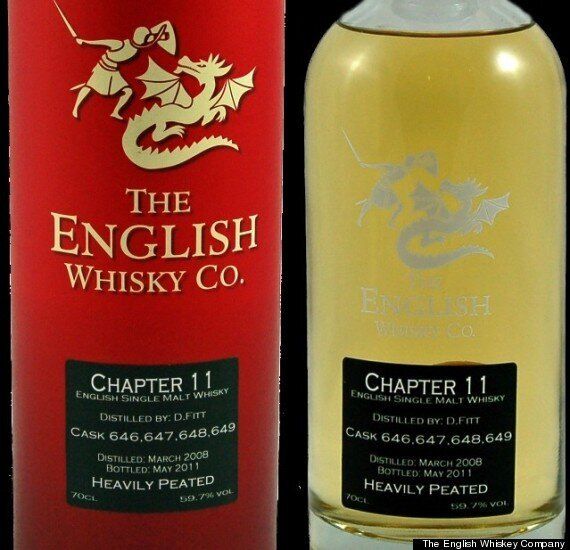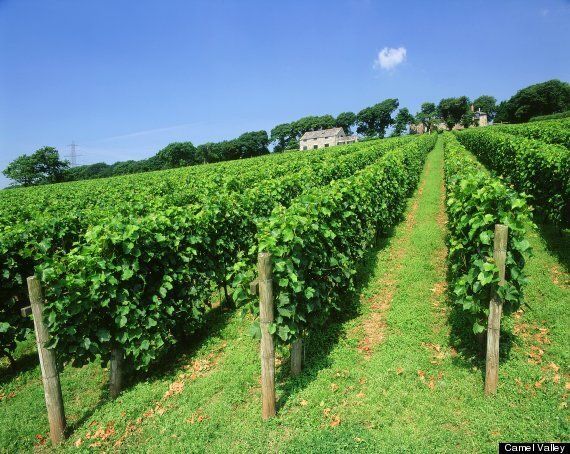The UK is undergoing a spirits revolution – and gin in particular is making a remarkable comeback.
Gin first hit our shores in the 16th century, after troops brought it back from the Holland and the 30 years war, after being given rations of gin to keep out the cold before battle.
Gin can be made from any spirit alcohol of at least 96% volume, generally with a base of either grain or molasses.
The alcohol has no flavouring; that comes from the botanicals which are added during the distilling process.
All gins include juniper, although some have more than others – sweeter, less tangy gins, such as American ones and Scotland’s Hendricks, for example, have more floral notes than juniper.
Other botanicals include coriander, lemon peel, cinnamon, nutmeg, orange peel, angelica and cardamom – typically a good gin will have between six and ten botanicals in it.
So what do the Brits do differently?

Hogarth's famous depiction of Gin Lane
Aside from the uber brands most readers will be familiar with; Tanqueray, Gordon’s, Beefeater, London Dry Gin, Hendricks and Bombay Sapphire, there has been a revival of smaller distillers.
These distillers hark back to the days where there were hundreds of boutique gin manufacturers to choose from.
“The British have a very strong historical association with the drinks trade,” Hilary Whitney from Sacred Gin told the Huffington Post UK.
She added that this year’s resurgence was “much overdue” and that the world considered London to be the natural home of the spirit. “Provenance is important,” she said.
Jamie Baxter, who previously set up William Chase vodka, and is about to launch a new gin distillery and bar in the city of London, agreed.
“London used to be heaving with distilleries, now we’re the first in the city of London for 200 years,” he said.
“Gin is a very English product and is especially associated with London – although actual London gin can be made anywhere, whereas Plymouth gin has to be made in Plymouth.
“Gin is becoming trendy again and London influences the world – lots of young people have started blogging about fin and less about vodka.”
Trendy it might be, but vodka still has the edge as the party drink, according to a report from Mintel.
Vodka is still the UK's best-selling spirit, worth an estimated £2.2bn, while gin sales were put at £675m in 2011.
Gin is seen as a mellow, "anti-party" option by 18-24 year olds, so vodka is their party drink of choice, but there’s a growing number of people who choose to drink gin at home, leading to a boom in premium and craft (independently made gin, often made in small batches) brands.

Plymouth gin, which can only be legally manufactured in Plymouth
Exports of British gin has helped these distillers cope with the recession, with even the smaller brands such as Sipsmiths exporting to more than 20 countries including Spain, Germany, Australia and China.
“Re-invigorating the lost art of producing gin by hand in the home of gin, this recognition of (British) quality is important for the credibility of the premium quality claims that the brand makes,” said a spokesman for Sipsmiths.
Another craft distiller, Sacred Gin, exports to the US, Belgium, Japan, China, Norway, Australia, China, Luxembourg, Switzerland and even Holland, the home of gin.
Baxter told the Huff Post UK: “Spain’s the biggest European market outside of the UK – there are lots of sophisticated cocktails are being developed with gin in Madrid and Barcelona. The Far East is starting to wake up to it too.”
And gin benefits from being a relatively small industry, compared to wines or beer. “There are only a few hundred gins in the market,” said Sacred Gin’s Whitney. “If there is continued growth in producer numbers the marketplace could become very crowded.”
A lack of tax incentives is hurting small distillers too – a typical bottle of gin has £7.50 of alcohol duty slapped on the price, plus 20% in VAT.
“For the small scale distiller, there are tax breaks on the continent but not in the UK,” said Baxter.
“Micro breweries get a tax break in the UK, but nothing like that for the gin distillers.“
One way to recession-proof the business is to diversify – a move which Sacred Gin does with great aplomb.
“In addition to Sacred Gin, we are now producing Sacred Spiced Vodka (soon to be relaunched as London Dry Vodka); Sacred Organic Vodka and Sacred Spiced English Vermouth, made using English wine,” said Whitney.
Whisky
Whisky has also experienced an exciting period in the 21st century – far from just being a Scottish spirit, whisky distillers are now popping up in England and Wales too.
Andrew Nelstrop, managing director, of the English Whisky Company told Huff Post UK that East Anglian barley provides 60% of the malt for Scottish whisky.
“That and the very cold, clean water we use helped our success. Good whisky benefits from really cold, clean water which is why Scottish distilleries used to close in the summer,” he explained.

The English Whisky Company's Chapter 11 whisky
Whisky distillation in Wales actually goes back to the 4th century, according to Penderyn’s managing director Stephen Davies.
“This means whisky produced here is rightly perceived by consumers around the world as being authentic and a product with a history of centuries of craftsmanship and refinement,” he told Huff Post UK.
“Britain is a fantastic place to do business in many ways. Not only do we have access to great staff and stable trading conditions, we also benefit from some outstanding natural resources,” Davies continued.
“As an example, water is absolutely crucial for distilling whisky, and our position in the Brecon Beacons provides our distillery with access to the very best pure water drawn from our own source.”
Other traditional whisky manufacturers can be accused of being anti-change, but smaller distillers are producing innovations regularly to keep regular customers interested and to entice new ones, Davies said.
“As an example, Penderyn commissioned a unique single pot still which produces a spirit with the highest strength of any malt whisky - 92% ABV.”
As with gin, whisky has witnessed a steady growth over recent years, despite the recession. It appears that single malt whiskys are standing up alongside blended whiskys (which tend to be cheaper) as drinkers become more sophisticated.
“The recession was already in full swing when we launched our first whisky – so we have no way of knowing what would have been the scenario in booming climate, but we have seen increased sales year on year since starting,” said Nelstrop.
“Quality products will always do okay in a downturn, so long as the price is realistic. The customer is probably more aware of value today than they were 10 years ago.”
And as with gin, the export market has proved invaluable.

Popular export markets include the EU, Australia and Japan
“We currently export to countries throughout the EU, Australia, North America and Japan, and other smaller markets throughout the world,” said Davies, whose Penderyn Whisky currently exports between 15% and 20% of its produce.
“However exporting single malt can be difficult due to varying licensing laws. Take Canada for example: you need a separate approval for each state, which makes it very difficult for a small producer.
“We’ve just established an agreement with The Whisky Exchange who can deliver our products outside of the UK – this makes things much easier for us.”
India is also a new market attracting distillers. Nelstrop said he thought India and England’s natural affinity would help sales, but import taxes into India are still huge, which makes the end retail price unrealistic.
In alignment with breweries and gin distillers, whisky manufacturers are also fed up with the taxes being forced onto small players.
But the threat of uber-manufacturers is also being felt – Diageo, which produces a number of different spirits including whisky, is such a big player that some are worried it could distort global markets.
“The main challenge facing us without a doubt is keeping whisky as the premier drink and not letting cognac and other spirits take that position away. However, if Diageo take over United Spirits, they will be so big they will probably be in a position to decide how the market moves and performs,” said Nelstrop.
“Hopefully they have enough invested in whisky to keep it near the top of the tree.”
Poor harvests could also affect the future of whiskys – blighted by poor weather and growing conditions.
Wine
The newest entrant to the block when it comes to British booze production is the UK wine industry.
Most vineyards have only appeared in the last ten years, although Camel Valley was established in Cornwall in 1989, and has been winning awards since 2008.
For years it was ridiculed for producing overly sweet, questionable quality white wine, but a rise in the average temperature in the south of England has led to a boom in vineyards appearing.
Marks and Spencer, Waitrose, Majestic Wine and Harvey Nichols now all stock high quality English wines, with celebrity chefs such as Jamie Oliver and Gordon Ramsey also beginning to offer them in their restaurants.
Cooler temperatures lead to clean, crisp tasting white wines – and if you believe the vineyards – the terroir in the Garden of England that is Kent and Sussex is on a par with Champagne in France.

Camel Valley vineyard in Cornwall
Most vineyards remain small – anywhere between five and 30 hectares is normal, although there is a 50-hectare plot in the South Downs, Rathfinny, owned by Mark Driver, which aims to expand to 350 hectares by 2018.
William Boyack, media and public affairs manager of the Wine and Spirit Trade Association, told Huff Post UK, that the UK wine trade’s perceived failings – lack of volume, lack of heritage and unpredictable weather, had actually led to its key strengths.
“The three key advantages UK wine has over its foreign rivals are innovation, resilience and experience,” he said.
“The UK alcohol industry directly employs more than 650,000 people in the production and retailing of alcohol and supports a further 1.1 million jobs in the wider economy. In addition, 18% of direct employment in the European spirit industry is in the UK - the highest contribution of any member state.”
Chapel Down group’s chief executive Frazer Thompson added that the “Brand England" on side also helped.
“Britain is appalling at making low cost popular goods, but brilliant at quirky, distinctive, unusual, imaginative, innovative and distinctive things,” he said.
“It hasn't always been easy, but a stiff upper lip and a determination to beat the French are powerful motivators!”
Sales figures from the WSTA showed the UK market had been buoyed by the effect of the Golden Jubilee and the Olympics. While overall alcohol sales are declining some categories were showing encouraging signs, including:
- Off trade sales of Sparkling wine increased by 5% in the last year and 12% in the last twelve weeks
- Sales of wines over £5 now represent over 33% of total wine sold in volume in the off trade
There is even a nascent export market developing – particularly in regions where ‘Brand Britain; does well, such as China and Japan.
There are significant challenges though, not least of all our rubbish recent summers.
Simon Robinson, owner of Hattingley Valley Wines, told Huff Post UK the three biggest problems facing vineyards were “the weather, the weather and the weather”.

British white wine - particularly sparkling white wine - is now starting to win awards
“Last year we produced 50,000 bottles in a difficult year weather-wise. This year is even more difficult,” he added. “Over the longer term, overproduction might be a problem if other countries are anything to go by, but it will be a long time before this is an issue here.”
Proposals to introduce a minimum unit price for alcohol from the Scottish and UK governments are seriously concerning wine producers.
The Scottish government’s proposals are currently being challenged in Europe and in the Scottish Courts. The WTSA believes the proposals are likely to be found illegal under European Law and ardently argues that there is no evidence to show that minimum unit pricing is an effective tool in tackling alcohol misuse
“Indeed minimum unit pricing has never been used in the world before. We believe that minimum unit pricing will punish the majority who drink responsibly and hit people on the lowest incomes the hardest,” said Boyack.
Elsewhere, alcohol fraud remains a major concern for the industry with customs estimating losses of up to £1.2bn a year to the beer, wine and spirit industry.
In May 2011 the WSTA launched a fraud prevention unit to lead industry efforts at cracking down on all types of fraud in the wine and spirit sectors. Around £1.5m worth of fraud or attempted fraud has so far been reported through the unit.
And, as with all of the other alcohol producers, vineyards are pleading to Osborne to reduce the duty - the proportion of tax on an average priced bottle of UK wine is now 56%.
